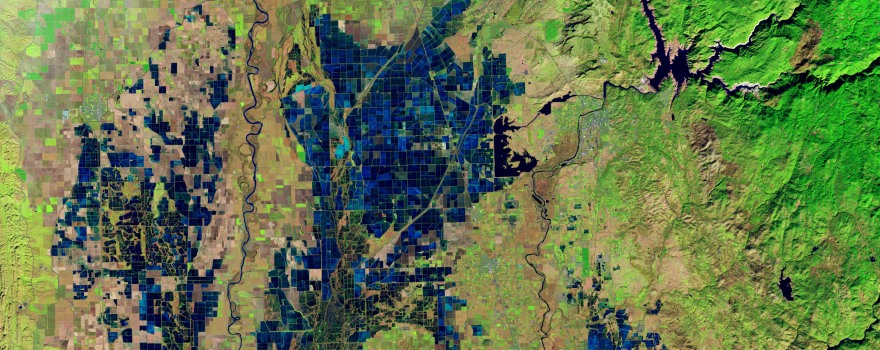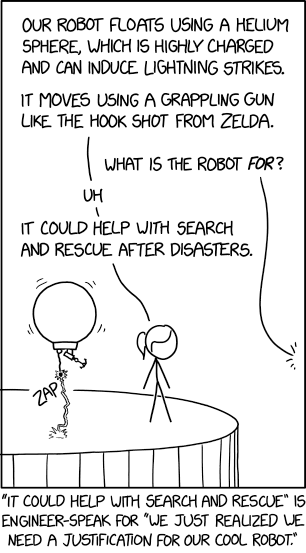
In science news this week:
A Honking, Fluttering Spectacle: “The honking, fluttering spectacle of tens of thousands of snow geese in flight is a breathtaking sight—like watching “snowflakes drifting lazily across the azure sky,” in the words of naturalist and historian George Bird Grinnell. It is also a sight that would be far less common in the Sacramento Valley if the region was not one of the largest rice-growing areas in the United States. In Grinnell’s day, the meandering Sacramento River wound through marshy wetlands in the valley, becoming what amounted to an inland sea during big winter and spring floods. Sacramento has the scars to prove it; the city has routinely suffered through devastating floods since the 1840s. … ” Read more from Earth Observatory here: A Honking, Fluttering Spectacle
Climate change and drought threaten small mountain streams in the Sierra Nevada: “Small mountain streams and the vibrant ecosystems they support were hit hard by the historic California drought of 2012 to 2015. Researchers monitoring aquatic life in Sierra Nevada streams observed significant declines in the numbers of aquatic insects and other bottom-dwelling invertebrates during the drought. The most vulnerable species included many of the larger insects preferred as food by fish, birds, and other wildlife, said David Herbst, a research biologist at UC Santa Cruz and first author of a paper on the new findings, published March 7 in Freshwater Biology. … ” Read more from Phys Org here: Climate change and drought threaten small mountain streams in the Sierra Nevada
The complexities of counting juvenile salmon: “Compared to counting adult salmon returning to rivers to spawn, counting their offspring is a lot harder than you might expect. Not only can a few adult salmon produce thousands of offspring, the tools that we use to count baby salmon also come with their own sets of challenges. The essential conundrum is that, unlike adult salmon, we cannot feasibly catch and count every juvenile salmon in a river. Instead, we have to make estimates about how many young salmon are born and surviving each year based on sampling a portion of their population. But if we can never know the true number of individuals, how do we know if our estimates are accurate or not, or are even close to the true value? … ” Read more from FishBio here: The complexities of counting juvenile salmon
Research expedition reports surprising findings on coho, sockeye salmon in Pacific Ocean: “After five weeks at sea, a team of 21 scientists from five countries returned Monday with some surprising findings about the mysterious lives of salmon in the Pacific Ocean, according to Laurie Weitkamp, a salmon biologist with NOAA’s Northwest Fisheries Science Center in Newport, Oregon. “It was quite an experience,” said Weitkamp, one of three chief scientists aboard the Russian research vessel Professor Kaganovsky. ... ” Read more from the Statesman Journal here: Research expedition reports surprising findings on coho, sockeye salmon in Pacific Ocean
The Salmon that Were Born to Survive: “Everyone makes the same remark: it’s just like counting tree rings. When you press a salmon scale between two small panes of glass and peer at it through a microscope, that’s akin to what you see: an array of concentric circles from the center of the scale out to the edge. As with trees, these rings tell a story. Recently, Chris Conroy, a fisheries manager in Scotland, took scales off a salmon he’d sampled in a river and inspected them in a lab. Multiple rings form every year in salmon scales. In times of slow growth, such as the winter when salmon eat less, the rings form closer together, in tight, dark bands. At a few key locations on the scale, Conroy noticed several of these dark bands but two wavy ones stood out. These documented years when this fish had returned from the sea, making the arduous journey upriver to spawn. The rings showed that this fish had been captured on its third spawning run. … ” Read more from Hakai Magazine here: The Salmon that Were Born to Survive
Counting Lizards: New CDFW Study Confirms a Better Way to Survey Reptiles: “One might say that a groundbreaking new study conducted by two CDFW scientists and their research partners provides a leap forward in lizard research. Dr. Brett Furnas, a senior environmental scientist with CDFW’s Wildlife Investigations Lab, is the lead author on a paper entitled ![]() Hierarchical distance sampling to estimate population sizes of common lizards across a desert ecoregion. The co-authors on this paper are Scott Newton and Griffin Capehart, both formerly contractors for the Wildlife Branch at CDFW, and Dr. Cameron Barrows with the Center for Conservation Biology at the University of California, Riverside. … ” Read more from the Department of Fish and Wildlife here: Counting Lizards: New CDFW Study Confirms a Better Way to Survey Reptiles
Hierarchical distance sampling to estimate population sizes of common lizards across a desert ecoregion. The co-authors on this paper are Scott Newton and Griffin Capehart, both formerly contractors for the Wildlife Branch at CDFW, and Dr. Cameron Barrows with the Center for Conservation Biology at the University of California, Riverside. … ” Read more from the Department of Fish and Wildlife here: Counting Lizards: New CDFW Study Confirms a Better Way to Survey Reptiles
A Major Migratory Bird Habitat Is in Danger: “The Great Basin, one of North America’s most important habitats for migratory birds, is getting warmer, drier and saltier—and that’s a problem for some of the species that call it home. Killdeer, snipes, terns and grebes are among those already harmed, and scientists are concerned that more species might be hurt. The Great Basin is the continent’s largest continuous network of wetlands. It spans from Oregon, crosses Nevada and into Utah, and it touches parts of California, Idaho and Wyoming. It’s a critical stopover along a major migratory bird route down the West Coast of North and South America called the Pacific Flyway. Millions of waterbirds rest or breed in the Great Basin each year. … ” Read more from Scientific American here: A Major Migratory Bird Habitat Is in Danger
Medicine and personal care products may lead to new pollutants in waterways: “When you flush the toilet, you probably don’t think about the traces of the medicine and personal care products in your body that are winding up in sewage treatment plants, streams, rivers, lakes, bays and the ocean. But Rutgers scientists have found that bacteria in sewage treatment plants may be creating new contaminants that have not been evaluated for potential risks and may affect aquatic environments, according to a study in Environmental Toxicology and Chemistry. … ” Read more from Science Daily here: Medicine and personal care products may lead to new pollutants in waterways
Citizen science programs provide valuable data on intermittent rivers in southwestern US: “A University of Oklahoma-led project is showing how citizen science programs provide valuable data on rivers in southwestern United States. The datasets of ecological and hydrological data obtained from intermittent rivers (rivers that dry at some point in space or time) in Arizona are input into a nationwide network. Trained citizen scientists are mapping three rivers in Arizona: the San Pedro River, Cienega Creek and Agua Fria River. The wet and dry data collected yearly from these programs map information on how to best manage water resources under a changing climate. “It is difficult to get good quality data about how much water is in intermittent rivers. Most of our existing infrastructure for measuring river flows in the United States is geared towards monitoring water levels of perennial rivers, which are those that always flow. … ” Read more from Science Daily here: Citizen science programs provide valuable data on intermittent rivers in southwestern US
How Cities Can Protect Themselves from Rising Waters: “Across the U.S., policymakers are scrambling to protect their communities from the effects of climate change. In January, Massachusetts Governor Charlie Baker proposed real-estate tax increases to fund dam and drainage system upgrades, which would help residents cope with future floods and storms. Meanwhile, a few months earlier, officials from several Florida counties agreed to work together to minimize the damage caused by rising sea levels. … ” Read more from Scientific American here: How Cities Can Protect Themselves from Rising Waters
How the Driest Regions on the Planet Add to Sea Level Rise: “As humans, we continuously engineer our environment. We build structures, drain water sources, create urban and suburban areas which transform the way our world looks and how it functions. But, we can’t forget that the changes we make have consequences. One such repercussion is the alteration of global water storage and the movement of water on the earth. Due to climate change, the last few decades bore witness to a measurable decline in water storage in all terrestrial or land-based environments across the globe. Examples of water loss from land include melting glaciers or frozen soils, depleted aquifers, drained reservoirs or lakes, and many more. When this water is lost from the land system, it is still part of the hydrosphere and will move to a different part of the global water cycle. So where is it going? … ” Read more from EnviroBites here: How the Driest Regions on the Planet Add to Sea Level Rise
Maven’s XKCD Comic Pick of the Week …
 Sign up for daily email service and you’ll never miss a post!
Sign up for daily email service and you’ll never miss a post!
Sign up for daily emails and get all the Notebook’s aggregated and original water news content delivered to your email box by 9AM. Breaking news alerts, too. Sign me up!
About Science News and Reports: This weekly feature, posted every Thursday, is a collection of the latest scientific research and reports with a focus on relevant issues to the Delta and to California water, although other issues such as climate change are sometimes included. Do you have an item to be included here? Submissions of relevant research and other materials is welcome. Email Maven


